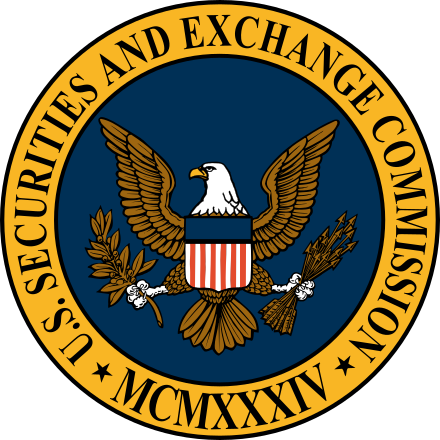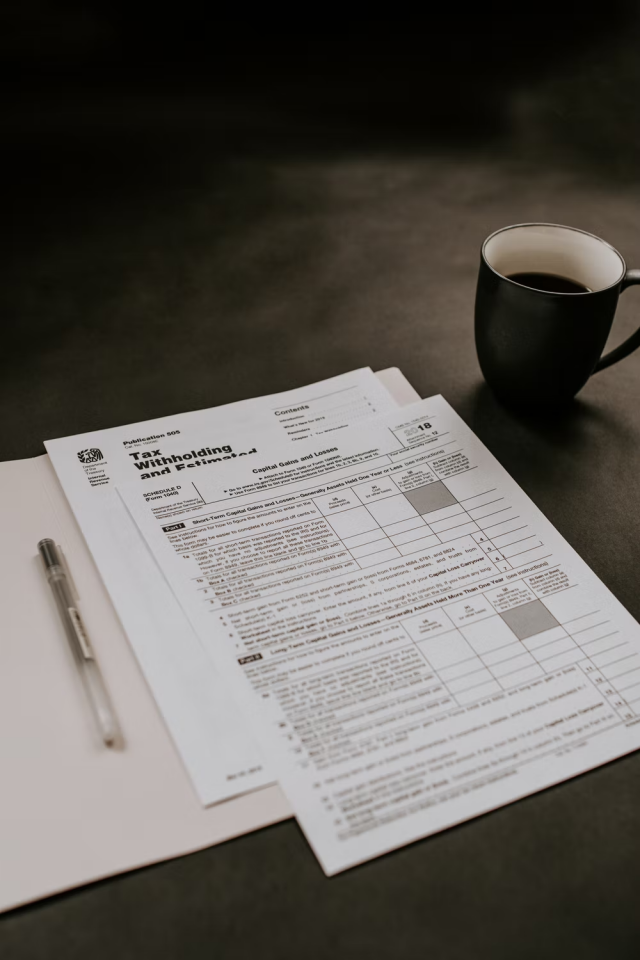SEC Filings
A regulatory documents that public companies, brokers, and certain buyers must submit to the "securities and exchange commission"
SEC filings are regulatory documents that public companies, brokers, and certain buyers must submit to the Securities and Exchange Commission. These are required for public companies to provide key information to investors.

The database where SEC filings can be found is called EDGAR. EDGAR stands for Electronic Data Gathering, Analysis, and Retrieval.
Here are a few filings that will be discussed in this article:
- Form 10-K
- Form 10-Q
- Form 8-K
- Form 8-A
- Form 11-K
- Forms 3, 4 and 5
- Schedule 13
- The proxy statement
- Form 144
What is Form 10-K?
Form 10-K is used by publicly traded companies to disseminate financial information annually and includes audited financial statements. But when do firms file these statements?
For large accelerated filers (greater than $700 million) deadline is 60 days after the end of the fiscal year. For accelerated filers ($75 million to $ 700 million), the deadline is 75 days, and for non-accelerated filers, it is 90 days.
Accelerated filers and large accelerated filers are special classes of filers that meet certain requirements.
What is Form 10-Q?
Similar to Form 10-K, Form 10-Q is also used by companies to give investors or potential investors details/statements on the company's financial condition. Unlike Form 10-K, Form 10-Q is filed quarterly.
The deadline for a large accelerated filer to submit Form 10-Q is 40 days. For an accelerated filer also, the deadline is 40 days. For non-accelerated filers, it is 45 days.

What is a Form 8-K?
Form 8-K is used to file “current reports.” Form 8-K is used by companies to notify investors or potential investors of specific events that might affect the firm or its shareholders. These events include:
- Any material change to the business structure, such as an acquisition or merger
- Any change in the corporate governance like management level positions
- Any sudden incurrence of significant debt
- Any big financial events such as default on a loan
- Failing to satisfy stock exchange listing requirements
What is Form 8-A?
SEC demands Form 8-A from businesses looking to register securities. Before securities may be offered on an exchange, they must be submitted. This is used for the registration of certain classes of securities.
What is Form 11-K?
This form is filed annually by the listed companies to disseminate information on stock purchases, employee savings plans, etc.

What are Forms 3, 4, and 5?
These forms are filed by company insiders to declare their recent purchases, sales, and holdings of their company.
Insiders are people who hold more than 10% of any class of a company's securities or work as officers and directors for that firm.
-
Form 3:
Form 3 is filed when a person becomes an insider and is promoted to a higher position. This is to disclose his or her ownership of the company's securities.
It is filed within ten days after the person becomes an insider. After a person becomes an insider, they shift on to Form 4 for disclosing any concerned information.
-
Form 4:
Form 4 is for existing insiders. It is filed when an insider executes a transaction. Form 4 is filed within two days of the transaction. This includes all the types of transactions that involve company stock ownership, such as common stock, options, warrants, etc.
-
Form 5:
Officers, directors, and beneficial owners of a firm (who possess more than 10% of the company) are only required to file Form 5 for transactions they failed to report or transactions that were exempt. Form 5 doesn't have to file for transactions that were already disclosed.
What is Schedule 13?
Schedule 13 is divided into two major schedules - Schedule 13D and Schedule 13G.
Anyone who gains beneficial ownership of more than 5% of any class of publicly traded securities in a public corporation is required to file a Schedule 13D.
It has to be filed with the SEC within ten days of acquiring the relevant securities. A more compact version of the Schedule 13D filing with fewer reporting requirements is the Schedule 13G filing.
This article also discusses two other schedules - schedule 13H and schedule 13F.
Large traders register with the Securities and Exchange Commission using Form 13H. The SEC uses this reporting form to identify traders who engage in a significant amount of trading activity, gather data about them, and analyze their trades.
After every quarter, all institutional investment managers managing at least $100 million of assets are obliged to file Form 13F. It reveals their equities holdings and can offer investors information about what the market's smart money is doing.
What are proxy statements?
Proxy statements are subjective statements on the condition of the workplace, supply chain, etc. These must be submitted to the SEC so that shareholders or potential investors can make informed decisions.
These are usually submitted before shareholder voting. It is also known as Form DEF 14A.
Some of the statements included are:
- Information on directors to check for any conflicts
- Proxy voting details (including dates for any votes and background information)
- Compensation details of employees, upper management, etc
- Audit Committee
What is Form 144?
Form 144 is also the "Report of Foreign Bank and Financial Accounts." It is used to report financial interests in a foreign financial account.
SEC Form 10-K
The content of Form 10-K includes:
Part I:
-
Item 1 Business:
An all-around description of the firm’s operations, product offerings, subsidiaries, and what markets the firm is active in.
-
Item 1A Risk Factors: This section addresses the potential risks to the company. It doesn’t include any strategy to tackle those risks.
-
Item 1B Unresolved Staff Comments: SEC sends certain comments on previously filed reports. In this section, the company explains issues pertaining to it (that weren’t resolved in a timely manner).

-
Item 2 Properties:
Information regarding the company's primary physical assets, including its main factories, mines, and other physically significant assets, is included in this section.
-
Item 3 Legal Proceedings:
Under "Legal Proceedings," the company is required to disclose details regarding major ongoing legal actions or other legal proceedings, aside from regular litigation.
-
Item 4 Mine Safety Disclosures:
If appropriate, disclosure is required under "Mine Safety Disclosures."
Part II
-
Item 5 Market for Registrant's Common Equity, Related Stockholder Matters, and Issuer Purchases of Equity Securities:
This item asks for information on the company's equity securities, such as market data, the number of shareholders, dividend payments, stock repurchases by the company, and comparable details.
-
Item 6 Reserved: this section is held for future requirements and currently contains no information.
-
Item 7 Management's Discussion and Analysis of Financial Condition and Results of Operations :
It provides information on the company's viewpoint on the previous year's financial aspect of the business.
-
Item 7A Quantitative and Qualitative Disclosures about Market Risk:
The exposure of the corporation to market risks, such as interest rate risk, foreign exchange risk, commodity price risk, or equity price risk, is disclosed under this item.
-
Item 8 Financial Statements and Supplementary Data:
This item requires audited financial information such as the income statement, balance sheets, cash flow statement, and statement of stockholder's equity.
-
Item 9 Changes in and Disagreements with Accountants on Accounting and Financial disclosure:
This mentions disagreements with the previous accountants in case the accountant(s) employed by the firm change.
-
Item 9A Controls and Procedures: This item is for information on financial controls and financial statement preparation procedures.
-
Item 9B Other Information: This section is for all the information that was meant to be filed in form 8-K but wasn't.
-
Item 9C Disclosure Regarding Foreign Jurisdiction

Part III
-
Item 10 Directors, Executive Officers, and Corporate Governance:
It calls for certain information about directors and committees of the board of directors, details on the company's code of ethics, and the directors' and executive officers' backgrounds and expertise.
-
Item 11 Executive Compensation:
It contains comprehensive information about the company's pay policies and programs and the compensation given to senior executive officers during the previous year.
-
Item 12 Security Ownership of Certain Beneficial Owners and Management and Related Stockholder Matters:
Disclosures regarding shares owned by the company's directors, officials, and some significant shareholders, as well as information on claims covered under equity compensation schemes.
-
Item 13 Certain Relationships and Related Transactions and Director Independence:
It contains details regarding the interactions and business dealings between the corporation and its officers, directors, and family members.
-
Item 14 Principal Accountant Fees and Services:
The fees that businesses pay to their accounting firm for various services provided throughout the year must be disclosed under this item.
-
Item 15 Exhibit and Financial Statement Schedules:
It lists all the financial statements and exhibits included in Form 10-K and includes some other required statements.
Item 1 to Item 4 falls under the umbrella of part 1 of Form 10-K. This first part provides information on risk factors, operational expenses, products, and pending legal cases. It also lists properties owed by the company.
Item 5 to Item 9C make up the second part of Form 10-K. This is the part with all the financial information.
The financial data provided includes the income statement, balance sheet, cash flow statement, and statement of stockholder's equity.
Most companies create financial statements according to GAAP, but some foreign firms can use International Financial and Reporting Standards.
Item 10 to Item 14 are in the third section of Form 10-K. This part is focused on the firm's upper management. Who are they, what are their experience and background, how much are they paid, how many shares do they own, etc.?
Item 14 covers the fees the firm pays to external accountants for their services. Note that this item can reference the proxy statement.
The final part, part 4, only contains Item 15, which is the Exhibits and Financial Statement Schedule. This is a list of the various financial statements and exhibits included in the filing and includes other required filings (e.g., financial statements from certain subsidiaries).
SEC Form 10-Q
Form 10-Q consists of information similar to Form 10-K.
Part I - Financial Information
Item 1 Financial Statements:
This includes the balance sheet, income statement, statement of stockholder's equity, and cash flow statement.

Item 2 Management's Discussion and Analysis of Financial Conditions and Results of Operations:
This item discusses a firm's circumstances, including its strategy, financial situation, operating performance, and cash flows.
It also touches upon financial trends and uncertainties and includes statements about the management team's outlook on the future.
Item 3 Quantitative and Qualitative Disclosures About Market Risk:
This item contains information on whether the firm has been impacted by forex, interest rates, or any other such market risk.
Item 4 Controls and Procedures:
This section includes information on:
- Evaluation of disclosure controls and procedures
- Changes in internal control over financial reporting
Part II - Other Information
Item 1 Legal Proceedings:
The firm needs to mention any legal proceedings involving the company or its upper management, directors, etc.
Item 1A Risk Factors:
This section addresses the potential risks to the company. It doesn't include any strategy to tackle those risks. Small reporting companies do not need to mention these.
Item 2 Unregistered Sales of Equity Securities and Use of Proceeds:
Any transactions in equity securities, such as the purchase of common stocks from private or open markets, need to be filed in this section. Working capital restrictions and other limitations related to the payment of dividends are also reported here.
Item 3 Defaults Upon Senior Securities:
This is filed if there has been a significant default in the payment of principal, interest, a sinking or purchase fund installment, or any other default of material nature.
If the firm or one of its subsidiaries can't recover from the default in 30 days and the relevant debt makes up more than 5% of the registrant's or registrant's subsidiary's total assets, the firm must file Item 3.
They need to give certain details, e.g., the nature of the default.
Item 4 Mine Safety Disclosures:
In this section, the firm needs to report any mine safety violations or other regulatory matters.
Item 5 Other Information:
This item is for disclosure of information that was required to be filed in a Form 8-K. After filling out the information in this form, the same information doesn't have to be filed in a Form 8-K.
Item 6 Exhibits:
It contains certain exhibits required by Item 601 of Regulation S-K.
Form 10-Q is divided into two parts - financial information and other information.
Four items make up the first part of the form 10-Q, which includes financial information and management's discussion of the firm's performance.
The second part pertains to all other information, such as any violation of rules and regulations, transaction details for securities, etc.
SEC Form 8-K
Form 8-K is filed to report unscheduled material events or changes in the company. The events that can be included in this form are - acquisitions, bankruptcy, and appointment or resignation of upper management personnel.
The Form 8-K is important because it helps investors understand and predict the financial condition of the company. This is a direct medium of communication, as any information shared directly reaches investors without alterations by other parties.

Form 8-K is also used by economists and financial analysts to analyze any major fluctuations in the company's performance. It helps them determine how an event influenced the market valuation of the company.
Form 8-K is also required when the companies change their certifying accountant. Changes in the fiscal year and modifications of the registrant's code of ethics should also be mentioned.
It is also used to announce changes in asset-backed securities.
Here is the information that is included in Form 8-K:
Section 1 is the Registrant's Business and Operations.
This section is used to communicate information on any material definitive agreement (its date, brief description of terms and conditions) or when the company needs to declare bankruptcy or receivership.
This section is focused on any changes in business operations. The possible items include:
- Item 1.01 Entry into a Material Definitive Agreement
- Item 1.02 Termination of a Material Definitive Agreement
- Item 1.03 Bankruptcy or Receivership
- Item 1.04 Mine Safety - Reporting of Shutdowns and Patterns of Violations
Section 2 is Financial Information. It discusses the major changes in a firm's financial health.
The section involves information on sudden events leading to abnormal changes in financial condition, merger, and acquisition transaction details, or if there have been any costs incurred due to material impairments.
This also includes financial obligations which can impact the balance sheet. Possible items include:
- Item 2.01 Completion of Acquisition or Disposition of Assets.
- Item 2.02 Results of Operations and Financial Condition
- Item 2.03 Creation of a Direct Financial Obligation or an Obligation under an Off-Balance Sheet Arrangement of a Registrant
- Item 2.04 Triggering Events That Accelerate or Increase a Direct Financial Obligation or an Obligation under an Off-Balance Sheet Arrangement
- Item 2.05 Costs Associated with Exit or Disposal Activities
- Item 2.06 Material Impairments
Section 3 is Securities and Trading Markets. There are several changes detailed in this section, such as changes to stockholder's rights such as voting in board meetings and changes in ownership of the firm's equity.
This section also disseminates information on the transfer or delisting of the company on an exchange. Here are the items under this section:
- Item 3.01 Notice of Delisting or Failure to Satisfy a Continued Listing Rule or Standard; Transfer of Listing
- Item 3.02 Unregistered Sales of Equity Securities
- Item 3.03 Material Modification to Rights of Security Holders
Section 4 is Matters Related to Accountants and Financial Statements. Under this section, the firm announces if it changed its certifying accountant and if there are any concerns or corrections regarding the past year's financial statements.
- Item 4.01 Changes in Registrant's Certifying Accountant
- Item 4.02 Non-Reliance on Previously Issued Financial Statements or a Related Audit Report or Completed Interim Review

Section 5 focuses on information related to Corporate Governance and Management. It includes any changes in the company status, upper-level management, etc. Here are the items included in this section:
- Item 5.01 Changes in Control of Registrant
- Item 5.02 Departure of Directors or Certain Officers; Election of Directors; Appointment of Certain Officers; Compensatory Arrangements of Certain Officers
- Item 5.03 Amendments to Articles of Incorporation or Bylaws; Change in Fiscal Year
- Item 5.04 Temporary Suspension of Trading Under Registrant’s Employee Benefit Plans
- Item 5.05 Amendments to the Registrant’s Code of Ethics, or Waiver of a Provision of the Code of Ethics
- Item 5.06 Change in Shell Company Status
- Item 5.07 Submission of Matters to a Vote of Security Holders
- Item 5.08 Shareholder Director Nominations
Section 6 is concerned with Asset-Backed Securities. This section includes information on changes in external financial support, changes in the servicer or trustee, and default on required distribution.
- Item 6.01 ABS Informational and Computational Material
- Item 6.02 Change of Servicer or Trustee
- Item 6.03 Change in Credit Enhancement or Other External Support
- Item 6.04 Failure to Make a Required Distribution
- Item 6.05 Securities Act Updating Disclosure
- Item 6.06 Static Pool
Section 7 focuses on Regulation FD (Fair Disclosure). This was implemented to compel companies to disclose important information to the public at the same time it was disclosed to other parties.
- Item 7.01 Regulation FD Disclosure
Section 8 is Other Events, where the registrant can give information that might not be represented by an item on this form but might be important for the shareholders. This is an optional section.
- Item 8.01 Other Events
Section 9 is Financial Statements and Exhibits. This includes financial statements for acquired businesses and funds, pro forma financial information for relevant transactions, shell company transactions, and exhibits.
- Item 9.01 Financial Statements and Exhibits
SEC Filings
Under Schedule 13, we have the following forms and schedules:
1. Schedule 13D
Schedule 13D is also known as a “beneficial ownership report.” This is filed when a person acquires more than 5% of the voting class of the firm's SEC-registered equity securities. The deadline for filling out this form is 10 days after the purchase.

2. Schedule 13G
Schedule 13G is a shorter version of Schedule 13D that can be filed in certain circumstances. 13D and 13G are both beneficial ownership reports. Schedule 13G can be filed in the following cases:
i) Rule 13d-1(b): If the institutional investor acquired the securities for normal business purposes instead of taking over the control of the firm.
ii) Rule 13d-1(c): By non-institutional investors who own less than 20% of the security and do not plan to take over.
iii) Rule 13d-1(d): For securities acquired before December 22, 1970.
The deadlines for filing Schedule 13 G are as follows:
-
Institutional investors with ownership (voting rights) between 5% to 10% should file within 45 days of the transaction.
-
Investors with more than 10% should file within 40 days of the transaction.
-
Non-institutional investors with more than 5% voting rights should file within ten days of the transaction.
-
Any changes involving more than a 5% change in voting rights must be filed.
3. Form 13F
Form 13 F is filed on a quarterly basis by investment managers overseeing investments worth more than $100 million.
These filings only include their long positions; short positions are not required. This form is filed within 45 days after the end of the quarter.
There are three types of Form 13F:
-
13F Holdings Report, for when all the securities are in the filer’s report
-
13F Notice, for when all the securities are in someone else’s report
-
13F Combination Report, used if some securities are in the filer’s report and others are in someone else’s report.
4. Form 13H
SEC form 13H is a reporting form used by large traders to inform about their possible activity after an identifiable transaction.
If the trader’s daily transactions exceed 2 million shares or 20 million dollars (whichever is lower), the trader is considered a large trader.
Alternatively, if the total monthly transactions are more than 20 million shares or 200 million dollars, the trader is considered a large trader.
There are four types of Form 13H:
-
Form 13H-A, also called Annual Filing, is filed by large traders every year to update their information.
For example, whether the trader was engaged in any business activity, their employment information, their status, etc.
-
Form 13H-Q, also called Amended Filing, is filed quarterly if there are any major changes in their annual filings
-
Form 13H-I, also called Inactive status, is filed to suspend their status as a large trader
-
Form 13H-T, also called Termination Filing, is filed to terminate their status as large traders (also terminating their filing requirements)




or Want to Sign up with your social account?